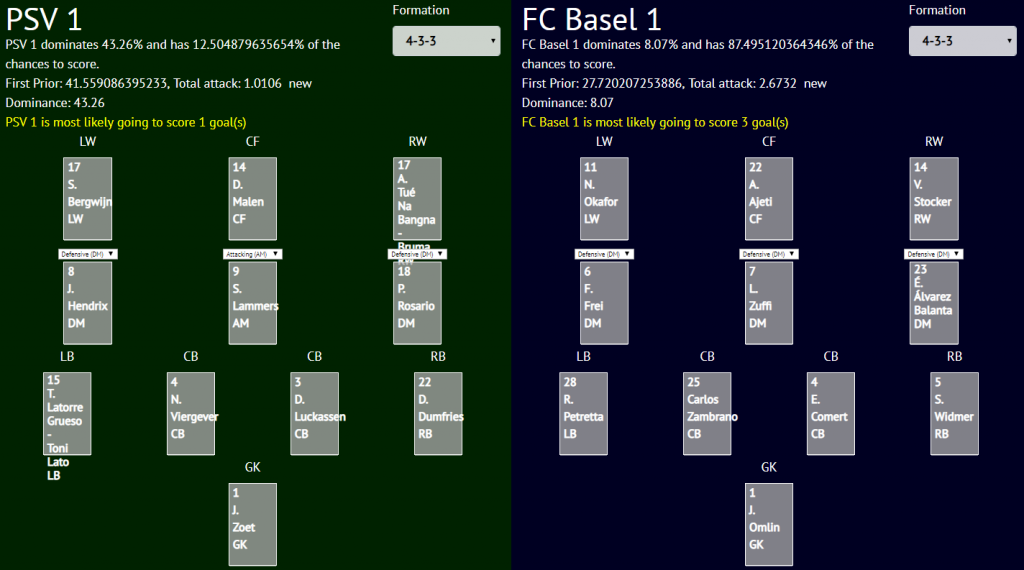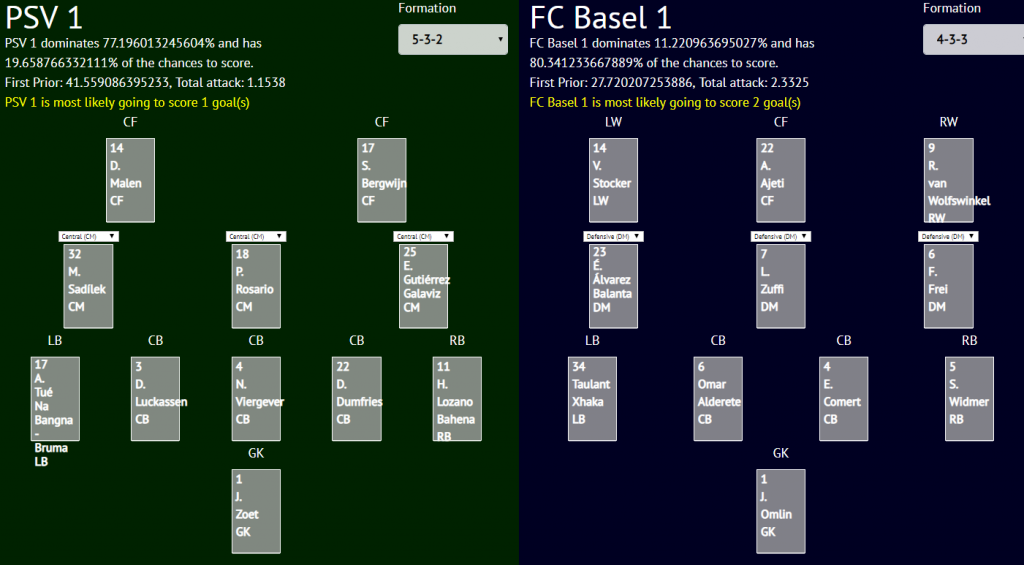What we do with FBM contribution statistics is calculate what the probability is that a player is able to contribute to a specific team. For a player can strengthen team A, but weaken team B. We do this for four scenarios:
- The best case.
- The most likely case.
- The worst case.
- The current form case, based on the current form of the players involved.
To calculate the probability that a player is able to contribute to a new team we look at:
- Difference between competitions.
- Difference between teams.
- Minutes played.
- FBM contribution stats.
We always look at how team A would do if they replace player X with player Y. In this showcase we look at how Sheffield United would do when they replace John Lundstram with Sander Berge.
The FBM contribution stats for John Lundstram are:
The FBM contribution stats for Sander Berge are:
At first sight one can see that Berge scores higher in almost every category. Only the probability that Berge is able to contribute to the attack in the most likely scenario (average) is significantly lower than that of Lundstram. Yet, it is important to take into account that the probabilities for Berge are with Genk playing in the Belgium competition and Lundstram’s probabilities are with Sheffield playing in the Premier League. So we have to adapt these values.
Calculating Sander Berge’s expected contribution to Sheffield
Because probabilities don’t point to a single event happening for sure, but for multiple possible events happening with a certain probability, we always look at the four different scenarios mentioned earlier. What we do in each scenario is subtract the actual contribution of Lundstram from the FBM stats for Sheffield and then add the expected contribution of Sander Berge to Sheffield. Sander Berge’s expected contribution is based on his actual contribution to Genk deflated or inflated to compensate for the differences between the competitions, teams and minutes played.
The most likely scenario
In the most likely scenario Sheffield will have a very similar overall performance. The attack of Sheffield will be a bit less strong with Berge rather than Lundstram. Defense will be the same. Transitioning & build up will be much better with Berge. The reliability of the team will remain the same. A 3 points higher FBM team score translates into one additional point in the competition for Sheffield.
The best scenario
In the best scenario Sheffield will not improve much. Sheffield will trade a slightly better performance overall and in attack to an even less functioning transitioning & build up. As you can see the best scenario is worse than the most likely scenario … worse for Sheffield. But with the best scenario, we look at the best performance of both players and compare those.
The worst scenario
As you can see in the worst case, Sheffield is better off in almost every category except defense. The reason is that Sander Berge, even after compensation for a different team and a different competition, still has a higher floor in his performance than John Lundstram.
The current form scenario
The current form scenario shows that impact that Berge can make on the play of Sheffield if he is able to keep his current form at Sheffield. Our FBM contribution stats predict that he probably performs a bit less than this as per the most likely scenario. But there is a decent chance that Berge will perform like this at Sheffield, netting Sheffield 2 extra points at the end of the season when they start with Berge instead of Lundstram.
Conclusion
In all scenarios Sheffield is better off with Berge than with Lundstram except in the best case scenario. When both players play at their best, it makes little difference to Sheffield who is in the starting XI. Yet, Berge is currently performing close to his top performance, while Lundstram is currently performing below his median performance. This means that in the short term, Sheffield’s performance is most likely to improve when they start with Sander Berge.
| Probability that Sander Berge contributes to Sheffield | 84% |
| Probability that Sander Berge contributes to the attack of Sheffield | 75% |
| Probability that Sander Berge contributes to the defense of Sheffield | 84% |
| Probability that Sander Berge contributes to the transitioning & build up of Sheffield | 22% |






